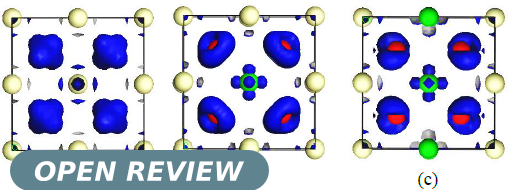Electronic and optical properties of nickel-doped ceria: A computational modelling study
DOI:
https://doi.org/10.4279/pip.140002Keywords:
Computational modeling, Density functional theory, Nickle doped cerium oxideAbstract
Cerium oxide $\text{CeO}_2$, or ceria, has gained increasing interest owing to its excellent catalytic applications. Under the framework of density functional theory (DFT), this contribution demonstrates the effect that introducing the element nickel (Ni) into the ceria lattice has on its electronic, structural, and optical characteristics. Electronic density of states (DOSs) analysis shows that Ni integration leads to a shrinkage of Ce 4$f$ states and improvement of Ni 3$d$ states in the bottom of the conduction band. Furthermore, the calculated optical absorption spectra of an Ni-doped $\text{CeO}_2$ system shifts towards longer visible light and infrared regions. Results indicate that Ni-doping a $\text{CeO}_2$ system would result in a decrease of the band gap. Finally, Mulliken's charge transfer of the $\text{Ce}_{1-x}\text{Ni}_x\text{O}_2$ system exhibits an ionic bond between Ce or Ni and O, and covalent bonds between Ce and Ni atoms. The analysis of absorption spectra demonstrates that Ni-doped $\text{CeO}_2$ is a material with potential use in photocatalytic, photovoltaic, and solar panels.

Downloads
Published
How to Cite
Issue
Section
License
Copyright (c) 2022 Hussein A. Miran, Zainab N. Jaf

This work is licensed under a Creative Commons Attribution 4.0 International License.
Authors agree to the PIP Copyleft Notice













